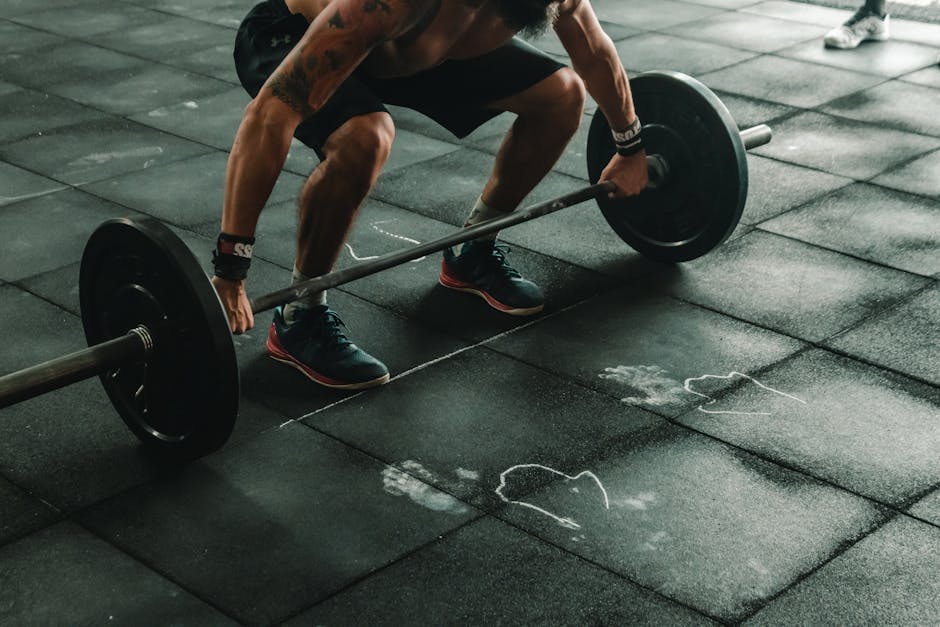Get Your Workout in Step: The Best Shoes for Gym Training
When it comes to hitting the gym, one of the most overlooked yet critical factors is selecting the right shoes. The perfect pair can make all the difference in your performance and help prevent injuries, so it's essential to choose wisely.
With so many options out there, it can be difficult to know which shoes will be the best for your specific needs. In this guide, we'll explore the top types of shoes for gym training and the factors you should consider when choosing your new kicks.

Your feet are the foundation of your body, and the shoes you wear can significantly impact your athletic performance.
Wearing the wrong type of shoes can lead to discomfort, injury, or even impede your progress in the gym. Investing in the right type of trainers can prevent foot pain, prevent injuries, and enhance your workout experience.
Top Types of Shoes for Gym Training
The right shoe for you will depend on your training style and workout goals.
Cross-training shoes are the most versatile type of shoe for gym training. They're designed to be all-purpose shoes that can handle a range of workouts from running on a treadmill to a conditioning workout.
Cross-trainers are a great option for gym-goers who prefer to switch up their routine often.
Cross-trainers have a firmer and more stable sole that helps with lateral movements, which are common in dance classes, cardio kickboxing, or boot camp sessions.
Besides, cross-trainers have some level of cushioning to support your feet when jumping or performing agility movements.
For gym-goers who need a reliable and versatile shoe that performs well across different activities, cross-trainers are an excellent choice.
Running shoes are designed for high-impact activities such as running, jumping, and cardio workouts.
They come with ample cushioning to reduce shock and impact when jumping or running, protecting your joints from damage.
Running shoes also have a curved sole that gives them a rocking heel-to-toe motion as you move.
This design helps in propelling you forward when running, making running shoes an excellent choice for cardio lovers. This type of trainers can also work well for treadmill workouts and boot camps that involve running or jumping.
Weightlifting shoes are designed for heavy lifting and resistance training. They come with a raised heel, which helps you achieve better form during deep squats, power lifting and other exercises.
These trainers have a firm sole to help keep your feet in place as you lift. The additional stability and support can help reduce the risk of injury when working with heavyweights, which makes these trainers the go-to option for power lifters and people who lift weights regularly.
Factors to Consider When Choosing Gym Shoes
When considering gym shoes, several factors can impact your workout performance and overall comfort. These factors include support and stability, comfort, and fit.
Support and stability are critical factors to consider to optimize your performance and reduce the risk of injuries.
A good gym shoe should offer both lateral and ankle support to help prevent ankle sprains and other accidental injuries.
Additionally, the shoe should be designed with a firm sole to provide a stable base for weightlifting and other exercises that require good balance.
For athletes who perform many high-intensity activities such as jumping or lateral movements, stability and support are even more important.
Comfort is a crucial factor when it comes to gym shoes. It's essential to select a shoe that fits snugly without being too tight or too loose.
A good gym shoe should come with ample cushioning to offer a comfortable workout experience without weighing you down.
Checking your foot shape is also important. If you have flat feet or overprotect when running, for example, selecting shoes designed for flat feet can help improve your running form and reduce the risk of injury.
Conclusion :
In conclusion, selecting the right shoes for gym training is essential to optimize your performance and prevent injuries. Cross-trainers, running shoes, and weightlifting shoes are the most popular types of gym shoes, each designed for specific workout styles and goals.
When it comes to choosing the right shoe, remember to consider factors such as support, stability, comfort, and fit. Try different types of shoes to see which ones work best for you and your workout programs to ensure that you're getting the best gym shoe for your needs. With the right gym shoes, you can take your training to the next level.

Comments